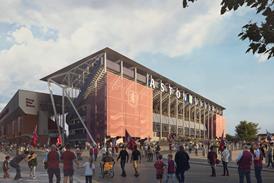- Home
- Intelligence for Architects
- Subscribe
- Jobs
- Events

2025 events calendar Explore now 
Keep up to date
Find out more
- Programmes
- CPD
- More from navigation items
This year’s Stirling Prize celebrates the true breadth of what architecture is – and can be

Celebrating a profession that’s as much about collaboration and civic impact as it is about buildings, this year’s Stirling Prize embraces architecture’s wider purpose, writes Eleanor Jolliffe
This year’s Stirling Prize winner is not without controversy. In the couple of days between the winner being announced and my sitting down to write this column, I have heard multiple slightly confused radio hosts querying whether the Elizabeth Line is architecture – or is it, in fact, engineering?
I have often written of the joy I find in the diversity of the British architectural profession, and, for me, this winner showcases it magnificently. For the wider public, architects are often assumed to work largely on ‘Grand Designs’-style jobs – private houses or one-off ‘special’ buildings. The wider profession of polymath and collaborative professionals working on public infrastructure, retrofit, refurbishment, urban planning, and hundreds of carefully considered and crafted ‘background’ buildings slips slightly below the radar of public awareness.
…
This content is available to registered users | Already registered?Login here
You are not currently logged in.
To continue reading this story, sign up for free guest access
Existing Subscriber? LOGIN
REGISTER for free access on selected stories and sign up for email alerts. You get:
- Up to the minute architecture news from around the UK
- Breaking, daily and weekly e-newsletters
Subscribe to Building Design and you will benefit from:

- Unlimited news
- Reviews of the latest buildings from all corners of the world
- Technical studies
- Full access to all our online archives
- PLUS you will receive a digital copy of WA100 worth over £45
Subscribe now for unlimited access.






